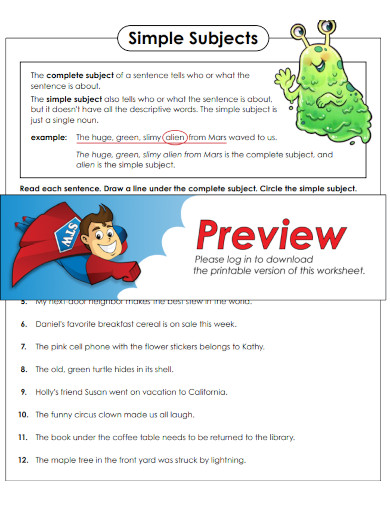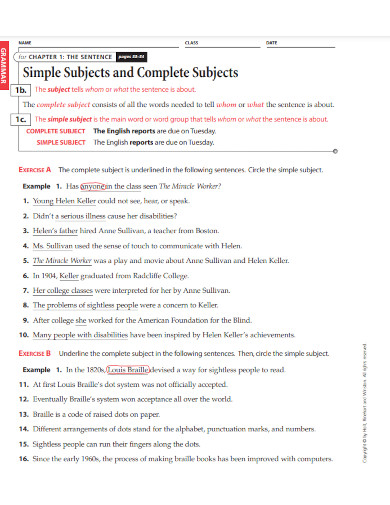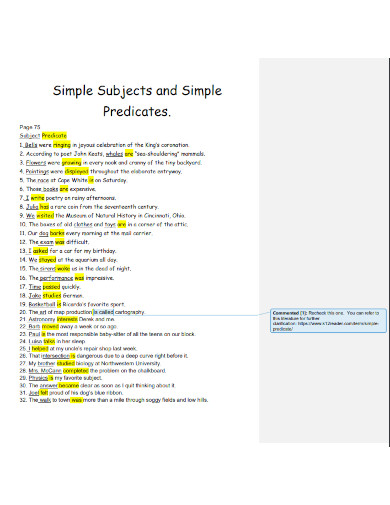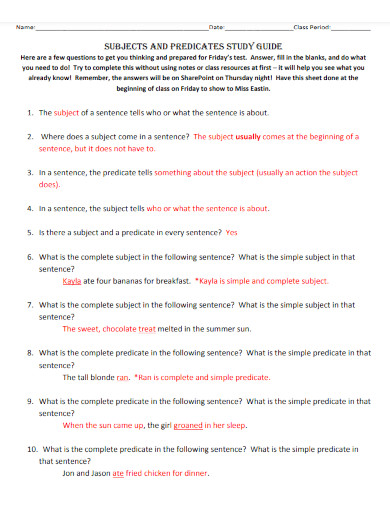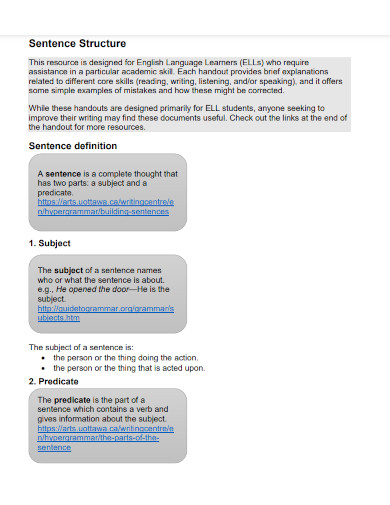70+ Simple Subject Examples
A simple subject is the main word or words in a sentence that tell us who or what the sentence is about. It is typically a noun or pronoun, and it does not include any modifiers or additional words. For example, in the sentence “The dog barked loudly,” the simple subject is “dog” because it tells us who is performing the action of barking. Understanding simple subjects helps us grasp the core meaning of sentences and improves our overall comprehension and communication skills.https://www.examples.com/business/proper-noun.html
What is a Simple Subject?
Types of Simple Subjects
One-word Subjects
The most common type of simple subject is a single word, which can be a noun or a pronoun. No matter how many modifiers are added to the subject, the simple subject remains the same.
Compound Nouns and Proper Nouns
Compound nouns and proper nouns can also function as simple subjects. Compound nouns are often written as two unconnected words or with a hyphen. Proper nouns may contain two or more words while still referring to a single concept.
Nouns and the Passive Voice
In passive voice sentences, the subject receives the action of the verb. Even if the meaning of the sentence changes, the simple subject remains the same.
Interrogative Pronouns
When questions begin with interrogative pronouns (who, what, which), these pronouns often serve as the simple subject. The focus of the sentence is on the interrogative pronoun.
Commands
In commands, the subject is usually implied and understood to be “you.” The simple subject is often not explicitly included but is understood to be “you.”
Compound Subject
A compound subject includes two or more noun phrases linked by a conjunction (and/or) and connected to the same verb. The simple subjects do not include any modifiers or linking words.
List of Examples of Simple Subject
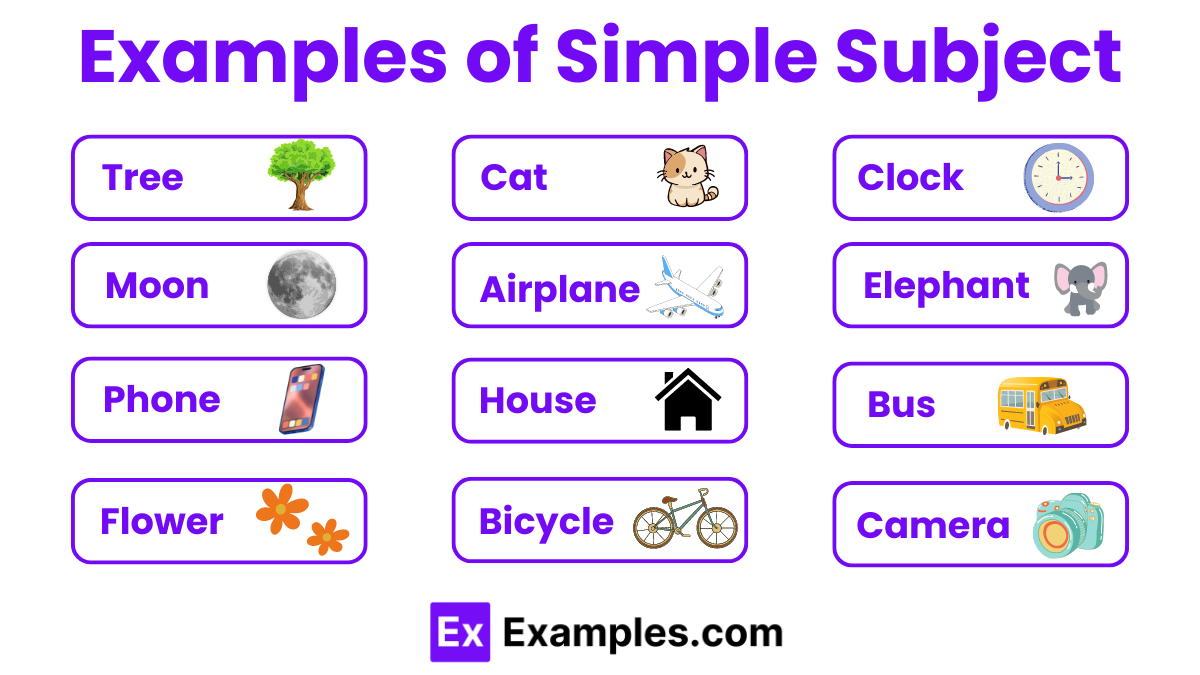
| Dog | She | Car | Teacher | Computer |
| Bird | Tree | He | Child | Phone |
| Moon | Book | Train | Flower | Cat |
| John | Waterfall | Airplane | House | Lion |
| Painter | Ship | Mountain | Window | River |
| Wind | Julia | Star | Doctor | Bicycle |
| Rain | Chair | Firefighter | Bridge | Student |
| Musician | Camera | Elephant | Ocean | Forest |
| Soldier | Clock | Cup | Street | Fisherman |
| Cloud | Writer | Bus | Garden | Engine |
Examples of Simple Subject in Sentences
- Bird chirped in the morning.
- Sun rose early today.
- Baby crawled across the floor.
- Manager scheduled the meeting.
- Lamp lit up the room.
- Chef prepared a delicious meal.
- Team won the championship.
- Puppy chewed on the toy.
- Wind blew through the trees.
- Guitar sounded amazing.
- Sister helped with the chores.
- Cloud covered the sun.
- Bookstore opened at nine.
- Mountain towered above the valley.
- Doctor examined the patient.
- Bus arrived on time.
- River flowed gently.
- Cousin visited us last summer.
- Artist painted a beautiful portrait.
- Fire crackled in the fireplace.
1. Simple Subjects Template
2. Simple Subjects and Complete Subjects
3. Simple Subjects and Simple Predicates
4. Simple Subjects and Predicates Study Guide
5. Simple Subjects Sentence Structure
Difference between Simple Subject vs Complete Subject
| Aspect | Simple Subject | Complete Subject |
|---|---|---|
| Definition | The main noun or pronoun that the sentence is about. | The simple subject along with all its modifiers. |
| Components | Only includes the main noun or pronoun. | Includes the simple subject and all words that modify it. |
| Example Sentence | “The cat sat on the mat.” | “The black and white cat sat on the mat.” |
| Simple Subject Example | “cat” | “cat” |
| Complete Subject Example | “The cat” | “The black and white cat” |
| Modifiers Included? | No | Yes |
| Complexity | Simple and straightforward | More detailed and descriptive |
| Use in Sentence | Identifies who or what performs the action | Provides a fuller description of the subject |
How to Identify a Simple Subject
1. Understand the Definition
The simple subject is the main noun or pronoun that the sentence is about. It tells you who or what performs the action of the verb.
2. Find the Verb
Locate the main verb in the sentence. The verb represents the action or state of being. Identifying the verb first will help you find the subject that is performing the action.
Example:
- Sentence: “The cat sleeps on the mat.”
- Verb: “sleeps”
3. Ask “Who” or “What” Before the Verb
To find the simple subject, ask “Who” or “What” before the verb. This question will lead you to the noun or pronoun that is doing the action.
Example:
- Who sleeps on the mat?
- Answer: “The cat”
4. Isolate the Main Noun or Pronoun
Once you have found the answer to the “Who” or “What” question, isolate the main noun or pronoun. This is your simple subject.
Example:
- The simple subject in “The cat sleeps on the mat” is “cat.”
5. Ignore Modifiers
Modifiers such as adjectives, articles, and phrases that describe the noun or pronoun should be ignored when identifying the simple subject. Focus only on the main noun or pronoun.
Example:
- Sentence: “The small, furry cat sleeps on the mat.”
- Simple Subject: “cat” (Ignore “The small, furry”)
How to use Simple Subjects
One may find both simple subjects and complete subjects in every phrase. A sentence’s simple subject is the noun or pronoun at its center, whereas a complete subject incorporates that word as well as any adjectives or adverbs that describe it.
Step 1: Eliminate extra words
When trying to identify the “who” or “what” in the center of a statement, it helps to first remove any unnecessary modifiers.
- The friendly dog played fetch
“The friendly dog” is the whole subject, and “the friendly” is an adjective that describes the main noun, “dog.” Because of this, “dog” is easily the simple subject.
Step 2: Simple subject is the noun
The simple subject is always the noun or noun phrase itself, regardless of how many modifiers that subject contains. A noun phrase, such as “ice cream,” consists of two or more words that do not serve as modifiers.
Step 3: Singular or Plural
In order to ensure that your subject and verb are consistent, use the simple subject to determine if your subject is single or plural. With the help of our no-cost grammar worksheet, you can be sure that your subject-verb agreement is always spot-on.
Step 4: Multiple-word Simple Subjects
Certain proper nouns, like a person’s full name, are more complicated than other nouns because they need two words to express the whole meaning. Nonetheless, a noun or pronoun may serve as a basic subject in most cases. Compound nouns and infinitives both serve as subjects in certain phrases.
How to Avoid Mistakes with Simple Subjects
1. Don’t Confuse Modifiers with the Simple Subject
Modifiers like adjectives, articles, and prepositional phrases can make it difficult to spot the simple subject. Focus on the main noun or pronoun only.
2. Identify the Verb First
Always find the verb first to help locate the subject. The subject performs the action of the verb.
3. Watch Out for Inverted Sentences
In questions and some other sentence structures, the subject can follow the verb. Rearrange the sentence if necessary to identify the subject.
4. Ignore Words that Come Before the Main Subject
Words like “there” or “here” at the beginning of sentences can be misleading. They are not the subject.
5. Be Careful with Compound Subjects
Compound subjects consist of two or more subjects joined by a conjunction (e.g., and, or). Each subject should be considered separately.
6. Avoid Mistaking Prepositional Phrases for Subjects
Prepositional phrases (e.g., in the room, with a book) do not contain the simple subject. The subject is usually found before or after these phrases.
What is a simple subject for dummies?
A simple subject is the main noun or pronoun in a sentence. It represents who or what the sentence is about. Example: In “The big cat sleeps,” “cat” is the simple subject.
Is a simple subject a predicate?
No, a simple subject is not a predicate. The simple subject is the main noun or pronoun, while the predicate includes the verb and all accompanying information about the action.
How do you choose the simple subject in a sentence?
To choose the simple subject, find the verb first. Then ask “Who” or “What” is performing the action. The answer is the simple subject. Example: In “Birds fly,” “Birds” is the simple subject.
What are two simple subjects?
Two simple subjects occur in a compound subject, where two or more nouns or pronouns share the same verb. Example: In “Tom and Jerry play,” “Tom” and “Jerry” are simple subjects.
What is an example of a subject?
A subject is the person, place, thing, or idea that performs the action in a sentence. Example: In “The dog barks,” “The dog” is the subject.
How do modifiers affect the simple subject?
Modifiers do not affect the identification of the simple subject. They provide additional information but are not part of the simple subject.
Can there be more than one simple subject in a sentence?
Yes, in compound subjects, there can be more than one simple subject.
Are simple subjects always at the beginning of a sentence?
Simple subjects are usually near the beginning of a sentence but not always. In questions or inverted sentences, they may follow the verb.
What role does the simple subject play in a sentence?
The simple subject identifies who or what performs the action of the verb. It is essential for the sentence’s meaning.
Can a simple subject be more than one word?
A simple subject is usually one word, but it can be a compound noun. Example: “Ice cream melts” – “Ice cream” is the simple subject.




